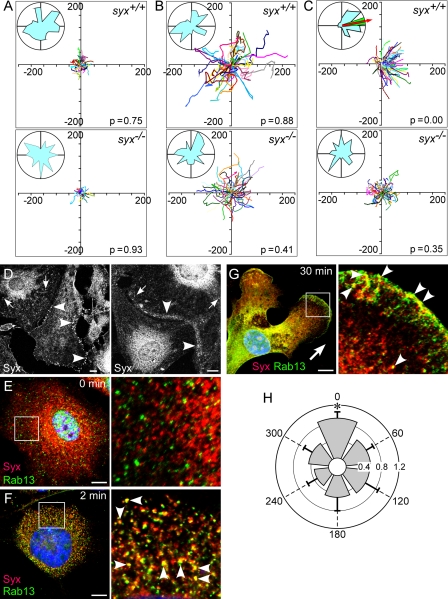FIGURE 1.
Syx was required for directional migration in response to VEGF and colocalized with Rab13. A–C, the migration of syx+/+ and syx−/− ECs did not have a predominant direction in the absence (A) or presence (B) of a uniform concentration of VEGF-A164 (20 ng/ml). Under a 0–20 ng/ml VEGF-A164 gradient (C), syx+/+ ECs migrated preferentially (red arrow in circular histogram represents mean direction; the green region represents 95% confidence interval) along the gradient direction (the x axis), whereas syx−/− ECs did not. x and y axis units are μm; total time, 240 min; p, probability of absence of a predominant direction, based on Raleigh test, n = 50–100. D, endogenous Syx was localized mainly to the cell periphery and cell junctions in confluent cells (arrowheads) and partially to cytoplasmic punctae (arrows). E, Syx and Rab13 appeared as cytoplasmic punctae in quiescent ECs. F, Syx and Rab13 colocalized within 2 min of VEGF-A164 stimulation (20 ng/m). G, under a VEGF-A164 gradient, Syx and Rab13 colocalized at the leading edge facing the gradient direction (arrow). H, quantification of the angular distribution of Syx and Rab13 colocalization in ECs subjected to a VEGF-A164 gradient (0–20 ng/m). The gradient direction is 0 degrees (mean ± S.D., n = 10, p < 0.007). Bars, 10 μm.

